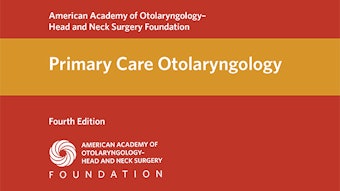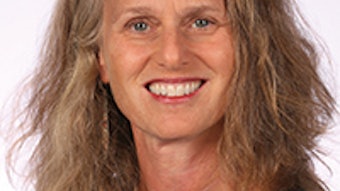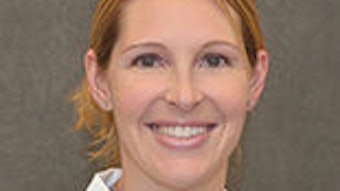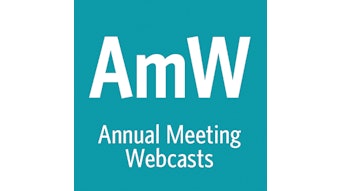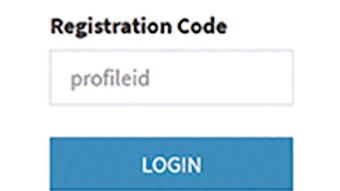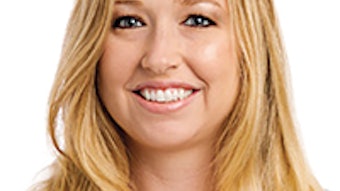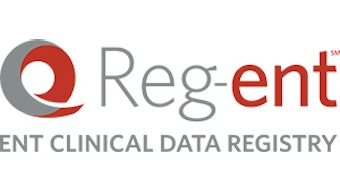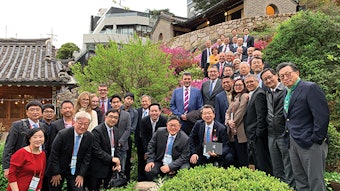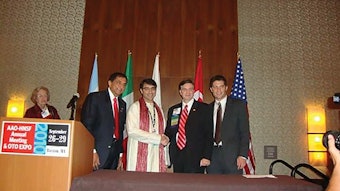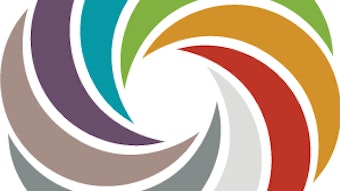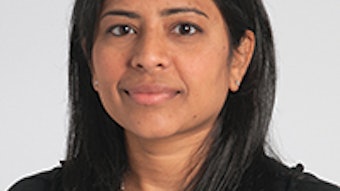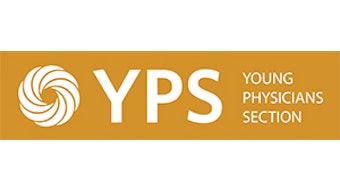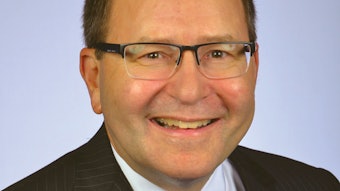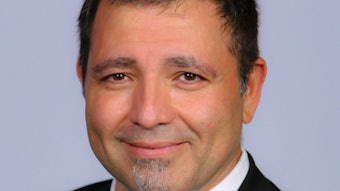Leadership transition in Foundation education
Jeffrey P. Simons, MD, has been actively involved in otolaryngology education on a national level since his residency, first as a member of the Core Otolaryngology Education Faculty of the AAO-HNSF followed by many years as a member of the Pediatric Otolaryngology Education Committee (POEC). Since 2015, he has served as Chair of the POEC and a member of the Education Steering Committee.
Richard V. Smith, MD; Jeffrey P. Simons, MD
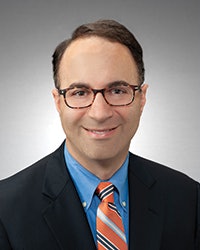 Jeffrey P. Simons, MD
Jeffrey P. Simons, MDJeffrey P. Simons, MD, has been actively involved in otolaryngology education on a national level since his residency, first as a member of the Core Otolaryngology Education Faculty of the AAO-HNSF followed by many years as a member of the Pediatric Otolaryngology Education Committee (POEC). Since 2015, he has served as Chair of the POEC and a member of the Education Steering Committee. In this role, he was responsible for the development and production of all pediatric otolaryngology education products, leading a team of approximately 30 committee members from across the country. Under his leadership, a number of successful and innovative education products were developed for AcademyU.
In addition to his work with the Academy, Dr. Simons has served in a number of other leadership roles in otolaryngology. He is Director at Large on the Board of Directors of the American Society of Pediatric Otolaryngology (ASPO), a member of the Education and Curriculum Committee for ASPO, and a member of the Executive Council for the Section of Otolaryngology-Head and Neck Surgery for the American Academy of Pediatrics. Dr. Simons also recently completed a two-year term as President of Pennsylvania Academy of Otolaryngology-Head and Neck Surgery (PAO-HNS). In addition, he is an Editor-in-Chief for the Fifth Edition of the textbook, Bluestone and Stool’s Pediatric Otolaryngology.
Dr. Simons has received an Honor Award from the AAO-HNS and the Helen Krause, MD, Distinguished Service Award from the PAO-HNS for his commitment and service to these organizations.
Some of Dr. Simons’ specific goals during his tenure as Coordinator for Education include:
- Introducing new, innovative education products that meet the needs of today’s practicing physicians, residents, medical students, and advanced practice providers
- Incorporating the use of simulation and gaming in new otolaryngology education tools
- Continuing collaboration with the American Board of Otolaryngology-Head and Neck Surgery (ABOHNS)
- Exploring opportunities for education product development with the otolaryngology subspecialty societies
- Enhancing collaboration with other Academy programs (e.g. Research and Quality, the AAO-HNSF journal Otolaryngology–Head and Neck Surgery, and the Annual Meeting & OTO Experience)
- Increasing the utilization of OTOSource.org—the single-source online repository for otolaryngology education
- Advancing the capabilities of AcademyU, the Academy’s online learning management system, so that it remains one of the preeminent online sources for medical education
Richard V. Smith, MD, spoke with Jeffrey P. Simons, MD, about his vision as Coordinator for Education.
Dr. Smith: You have served on AAO-HNSF Education Committees for over 15 years. What do you want to bring to your new role as Coordinator?
Dr. Simons: You are leaving big shoes to fill. I am honored to build on your many accomplishments over the past four years. As the next Coordinator for Education, I plan to bring a passion, drive, and collaborative approach to ensure that our education offerings reflect the future of learning. There have been significant changes in the delivery of medical education over the past several years. The demand for new formats and more varied options is higher than ever. It is important for the Foundation to embrace these changes, develop new, innovative education modalities, and keep pace with advancing eLearning technologies.
 Richard V. Smith, MD
Richard V. Smith, MDDr. Smith: What priorities do you have for the next four years?
Dr. Simons: My number one priority is to position the education content of the Foundation so that it serves as the premier source for otolaryngology education and the first place members turn to for continuing professional development across all stages of their careers. It will certainly be important to increase the awareness and utilization of AcademyU as the primary platform for all online otolaryngology education. Over the past year, I have had the privilege of serving on the AAO-HNSF Future of Education Task Force that you chaired. The findings from member surveys, focus groups, Annual Meeting evaluations, and AcademyU data have provided tremendous insight to new ideas, formats, and learning experiences that we can develop and offer for our members. Many of my specific goals are listed on the previous page.
I am looking forward to leveraging the deep expertise of the Education Steering Committee and the members of our Education Committees, supported by the Foundation’s devoted education staff, to develop a plan to bring many of these new ideas to fruition.
Dr. Smith: How is the Academy positioning itself to meet the needs of 21st century learners with innovative modalities?
Dr. Simons: Some of the more important changes I believe we will see in the future of otolaryngology education will likely involve embracing new paradigms for medical education, such as microlearning, simulation, and gaming. Responding to new learning styles that are case-based, interactive, and relevant to practice will be important. I would also like to see us develop more podcasts, expert interviews, and case discussions that physicians can work through in the morning before office hours, in between cases in the OR, or even during their commute to the hospital. Adopting the use of “Visual Abstracts” as a strategy to enhance learning and promote AcademyU offerings is a new tactic I am excited to put into action this coming year.
Dr. Smith: The new ABOHNS CertLink™ program is a positive step forward for the Academy and diplomates. How do you see this benefiting members?
Dr. Simons: CertLink for ABOHNS diplomates provides approximately 10-15 practice-focused questions per quarter that can be answered on their own schedule. Diplomates who successfully participate in CertLink will receive both Part II (Self-Assessment) and Part III (Continuing Certification) Maintenance of Certification credit. This program truly allows ABOHNS diplomates and Academy members to focus on continuing professional development and lifelong learning rather than studying for a recertification exam every 10 years. Beginning in 2020, through a joint CME providership agreement, the Foundation will award 10 CME/MOC credits annually to ABOHNS diplomates participating in CertLink. Our collaboration with ABOHNS will also allow participants the ability to seamlessly access relevant AcademyU education activities and OTOSource modules directly from CertLink to address specific knowledge gaps.
Dr. Smith: Resident education remains an important focus. What changes have you seen in that sector, and how can we adapt to continue to provide the best education for residents in our specialty?
Dr. Simons: The Academy certainly prioritizes resident education. Over the past year, I have spent a lot of time talking with residents and residency training program directors across the country to better understand their evolving needs for learning. With OTOSource.org now completed, residents, program directors, faculty members, and practicing otolaryngologists can use this free, comprehensive online study guide while seamlessly accessing topical education activities available in AcademyU or the Otolaryngology Specialty Society. The other tools we currently have available, such as HSC+ for Member Residents, the Resident How To Guide to AcademyU, COCLIA (Comprehensive Otolaryngologic Curriculum Learning through Interactive Approach), and AcademyQ – Knowledge Assessment mobile app are all widely used, but we know, based on feedback, that residents will be looking in the future for different tools and products. For example, gaming applications, instructional surgical videos, products to help with board preparation, and timely summaries of research publications with relevant clinical interpretation are some of the education modalities that today’s residents are seeking. I plan to continually assess these needs with the help of the Education Steering Committee as we introduce new education products over the next few years.
Final Thoughts
Overall, there are many exciting changes and innovative ideas for how to deliver otolaryngology education. It is clear to me that AAO-HNSF is devoted to serving the needs of its members and is committed to providing the best in high-quality otolaryngology education well into the future. I am honored to serve as your next Coordinator for Education. I look forward to hearing your ideas and learning ways I can deliver on my vision.
